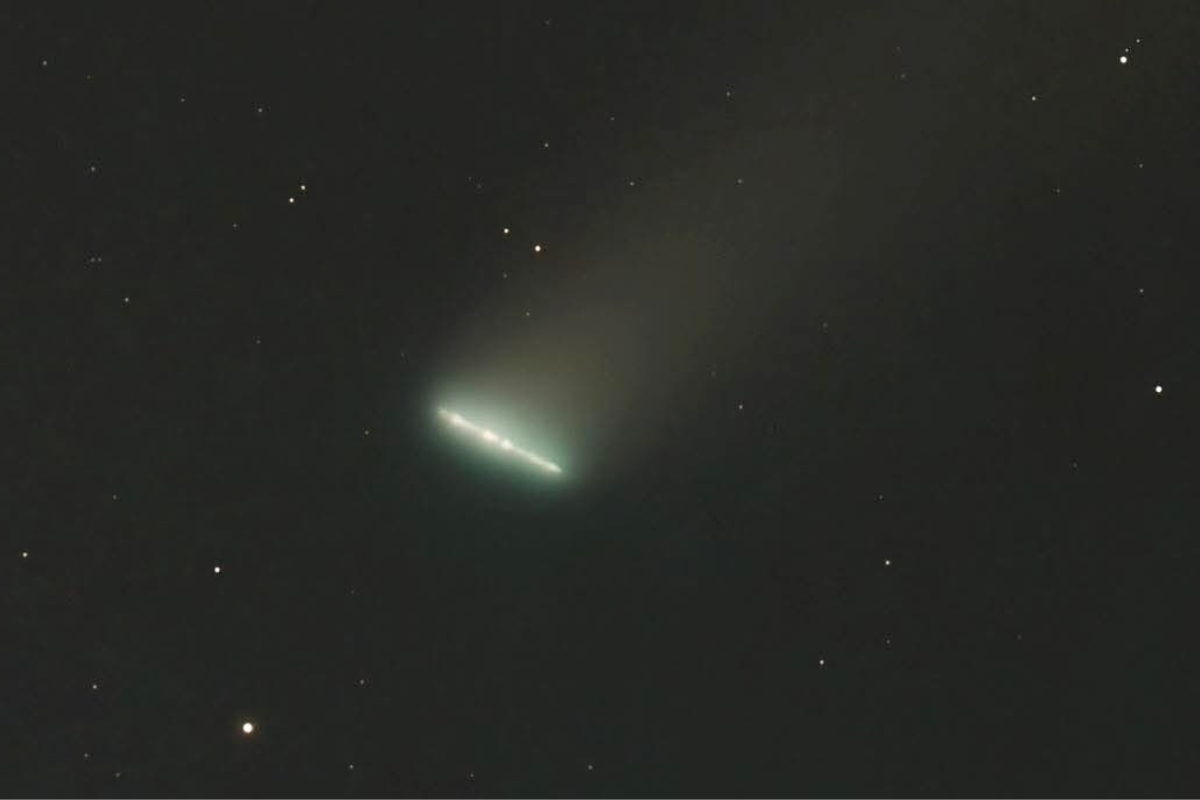Copyright International Business Times

Scientists analysing the interstellar visitor 3I/ATLAS believe that billions of years of high‑energy cosmic ray bombardment have effectively erased its true self, leaving only a heavily altered shell behind. A Comet With a Battered Face The comet, originally detected on 1 July 2025 by the Asteroid Terrestrial‑impact Last Alert System (ATLAS) survey, has amazed astronomers with its strange chemistry and unusual behaviour. It is only the third confirmed interstellar object to pass through our Solar System. New research indicates that the outer layers of 3I/ATLAS have been transformed by galactic cosmic rays (GCRs) over a protracted interstellar journey. According to a key study: 'the observed signatures provide compelling evidence for Gyr‑scale galactic cosmic ray alteration of the outer layers of 3I/ATLAS's nucleus'. In plain terms: rather than being a pristine relic of another star system, the comet's surface has been processed and reshaped—giving it a new 'face' forged by radiation. What the Evidence Shows Spectroscopy from the James Webb Space Telescope and other observatories indicates extreme enrichment of carbon dioxide (CO₂) compared to water and other anomalies. The study finds a CO₂/H₂O ratio of about 7.6 ± 0.3, far above what is typical in Solar‑System comets. The authors explain: 'Laboratory experiments demonstrate that GCR irradiation efficiently converts CO to CO₂ while synthesising organic‑rich crusts, suggesting that the outer layers ... consist of irradiated material'. Furthermore, the erosion modelling suggests that current outgassing from 3I/ATLAS is sampling only a layer approximately 15–20 metres deep that has been irradiated, with little chance of reaching any unaltered interior. In other words, what we're seeing today is not the original material from the comet's birth environment, but a shell that has undergone deep alteration. Why It Matters and What It Means This discovery is a major shift in how scientists view interstellar objects. The idea that a body arriving from another star system might present 'pristine' materials is now under question. As the study puts it, this represents a 'paradigm shift': 'Long‑residence interstellar objects primarily reveal GCR‑processed material rather than pristine material representative of their primordial formation environments.' That means when we use comets like 3I/ATLAS to probe alien star systems, we may be seeing the end result of deep space exposure, rather than the original story of their formation. What the Social Media Post Claimed The X (formerly Twitter) account Astronomy Vibes commented on the object's battered state, stating: 'A new study suggests this comet, which came from beyond our Solar System, has been changed by galactic cosmic rays—deadly radiation that travels through the galaxy for billions of years.' The 'Deadly Cosmic Rays' Angle Why call them 'deadly'? Because cosmic rays, high‑energy particles from outside the Solar System, have been relentless sculptors of 3I/ATLAS's surface over billions of years. In effect, they have 'destroyed' the comet's original outer shell and replaced it with one of irradiated ice, CO₂ crust, and altered organics. Although the interior may still preserve original material, the outer layers—what we can observe—are in effect a new façade. The comet's 'true self' in terms of formation heritage is hidden, perhaps irretrievably so. A Compelling Saga, Far Beyond Earth As 3I/ATLAS spins its way out of our solar system, it leaves behind not just data but a story—of survival in deep space, of exposure to processes far harsher than those in our own solar neighbourhood. The findings challenge expectations, demanding that scientists handle interstellar visitors with new caution. In the end, 3I/ATLAS may not show us an untouched relic of another star system as many hoped—but it does show us what happens to ancient objects that travel for aeons between stars. And that, in itself, is a powerful revelation.



